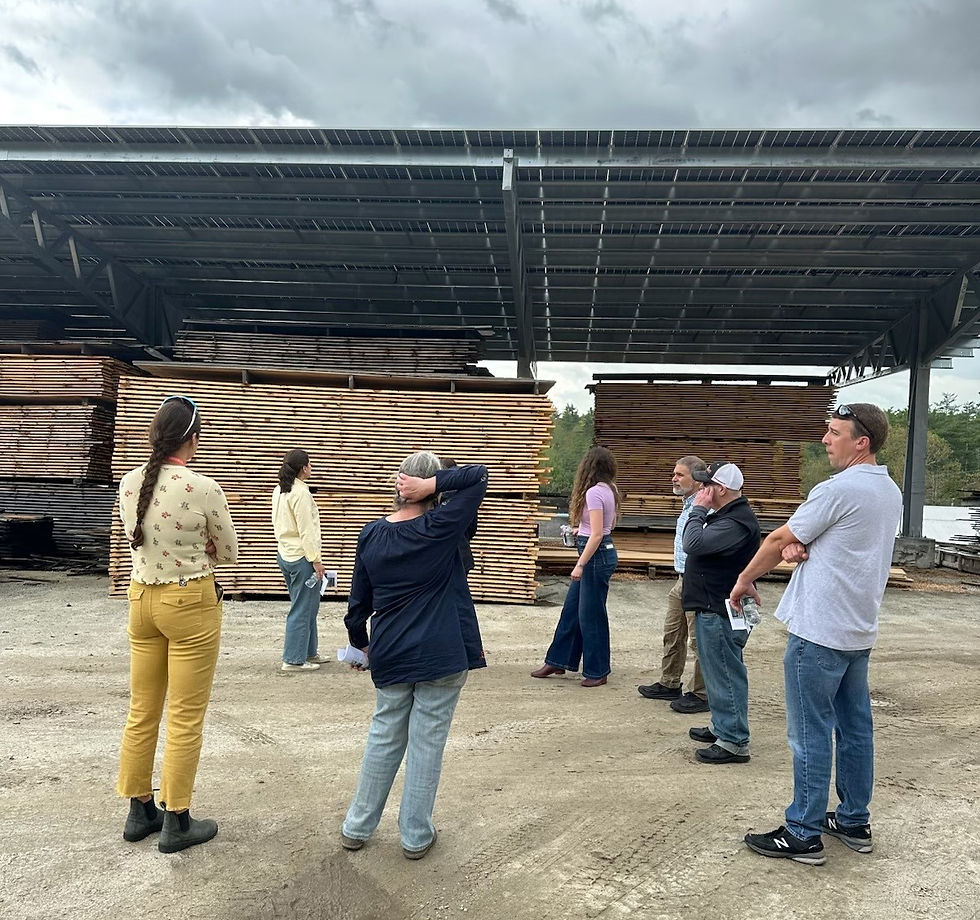Honoring the Past While Powering the Future with Solar at Wilkins Lumber
- Clean Energy NH

- Jul 29
- 3 min read
Tucked away in Milford, New Hampshire, Wilkins Lumber has been milling wood since the late 1700s, weathering generations of change in the industry. But recently, the family-run business made a bold leap: they went solar. And it all started with a simple motivation: reducing their carbon footprint and saving money.
A Legacy of Innovation
Wilkins Lumber’s story is steeped in history. Originally powered by water from a canal-fed pond, the mill eventually pivoted to steam, and then became one of the first corporate users of electricity in the region. But as energy costs began to skyrocket, the family realized it was time to innovate once again.

“We wanted to relieve some of the financial burden before passing things on to the next generation,” explained Sally Wilkins. “Electricity had become an increasingly large expense, and we saw solar as a way to take back control.”
The idea wasn’t a new one for Wilkins. They first looked into solar back in 2010 but were deterred by the upfront costs. Then, years later, Andrea O’Brien of the Small Business Development Center helped connect them with Scott Malansky and the Community Development Finance Authority (CDFA) team to set up an energy audit. That connection changed everything. Sally would go on herself to write and apply for the USDA’s Rural Energy for America Program (REAP) program.
The REAP Grant: A Path Forward
Applying for the REAP grant was no small feat. “There’s a lot of technical parts to the application,” Sally admits. “I had to bring in help; my daughter, who has a background in financial analysis, pulled together the projections and payback timelines. And we had great support in filling in the language we needed for the application.”

Even with help, there were hurdles. Lost paperwork, confusing federal processes, and tangled communication with project implementers plagued the early months. Still, they pushed forward with a contractor who thought creatively about implementation, suggesting a solar carport instead of a fenced-in array, which would house boards underneath and not take up additional space. The result? A system that integrates seamlessly into the millyard’s operations, with excess energy going back to the grid.
When the system first went live, there was a small but powerful moment that Sally recounts: the saw hit the log—and the lights didn’t dim. In the lumber business, that’s the kind of progress you can feel.
The project also supported the local economy, with local contractors being brought in to implement creative solutions while giving Wilkins Lumber more energy independence, creating a win-win situation.
Lessons Learned and Looking Ahead
Wilkins Lumber’s journey into solar wasn’t without stress, but the rewards are ten-fold. Their advice to other businesses?
Don’t assume you need all the money up front. REAP grants and CDFA loans can make solar a reality.
Find the right partners. Wilkins mentions seeking technical assistance from organizations Clean Energy NH and forward-thinking contractors like Net Zero Renewable Resources.
Get local officials on board early. Especially in small towns, having buy-in from local stakeholders (and keeping extra physical documentation!) can save you headaches later.
Start exploring. Quotes, options, and conversations with experienced providers go a long way.
Wilkins Lumber’s solar project proves that innovation doesn’t have to mean leaving the past behind. It can mean honoring it, building on it, while adapting to meet today’s challenges.




Comments